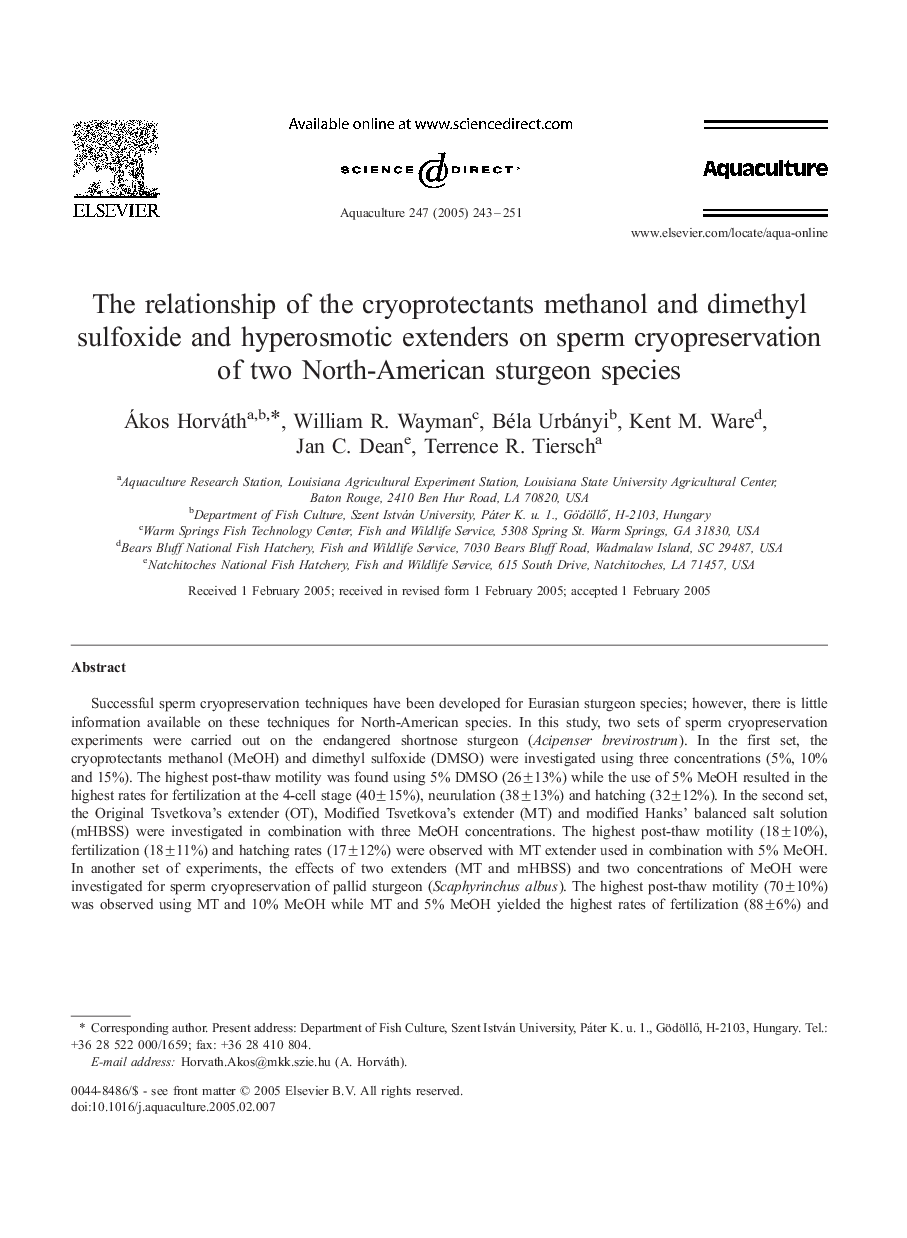| Article ID | Journal | Published Year | Pages | File Type |
|---|---|---|---|---|
| 8974662 | Aquaculture | 2005 | 9 Pages |
Abstract
Successful sperm cryopreservation techniques have been developed for Eurasian sturgeon species; however, there is little information available on these techniques for North-American species. In this study, two sets of sperm cryopreservation experiments were carried out on the endangered shortnose sturgeon (Acipenser brevirostrum). In the first set, the cryoprotectants methanol (MeOH) and dimethyl sulfoxide (DMSO) were investigated using three concentrations (5%, 10% and 15%). The highest post-thaw motility was found using 5% DMSO (26±13%) while the use of 5% MeOH resulted in the highest rates for fertilization at the 4-cell stage (40±15%), neurulation (38±13%) and hatching (32±12%). In the second set, the Original Tsvetkova's extender (OT), Modified Tsvetkova's extender (MT) and modified Hanks' balanced salt solution (mHBSS) were investigated in combination with three MeOH concentrations. The highest post-thaw motility (18±10%), fertilization (18±11%) and hatching rates (17±12%) were observed with MT extender used in combination with 5% MeOH. In another set of experiments, the effects of two extenders (MT and mHBSS) and two concentrations of MeOH were investigated for sperm cryopreservation of pallid sturgeon (Scaphyrinchus albus). The highest post-thaw motility (70±10%) was observed using MT and 10% MeOH while MT and 5% MeOH yielded the highest rates of fertilization (88±6%) and hatching (73±14%). In general we conclude that although hyperosmotic conditions of extenders and cryoprotectants result in higher post-thaw motility, they seem to reduce the fertilizing ability of the sperm.
Related Topics
Life Sciences
Agricultural and Biological Sciences
Aquatic Science
Authors
Ákos Horváth, William R. Wayman, Béla Urbányi, Kent M. Ware, Jan C. Dean, Terrence R. Tiersch,
